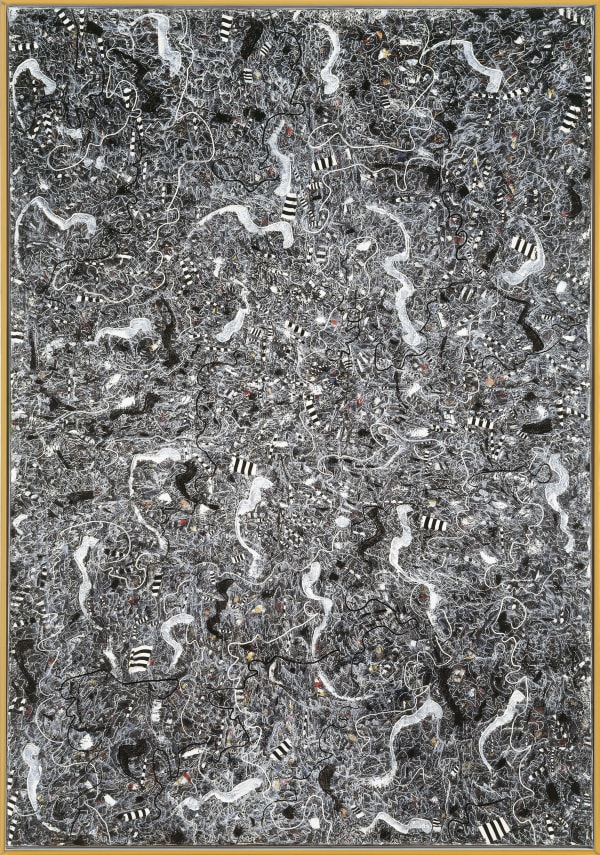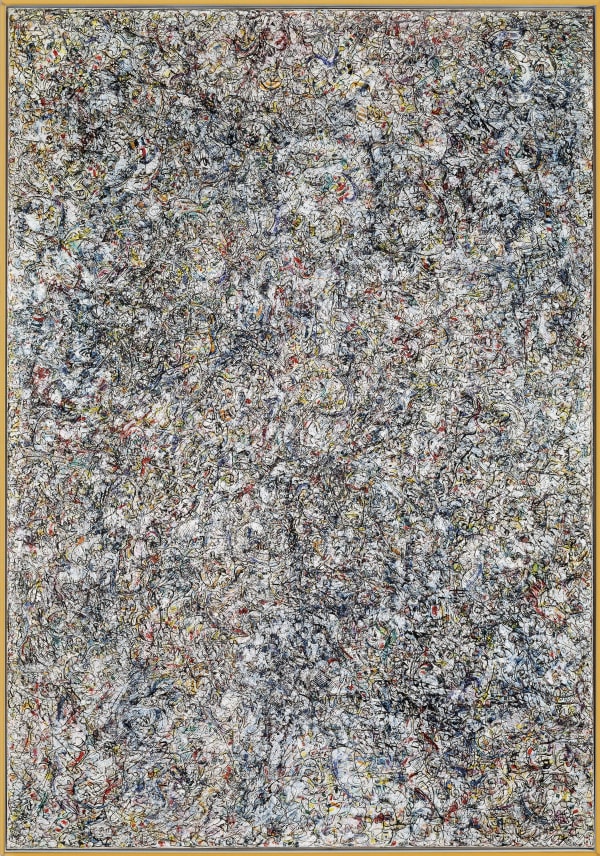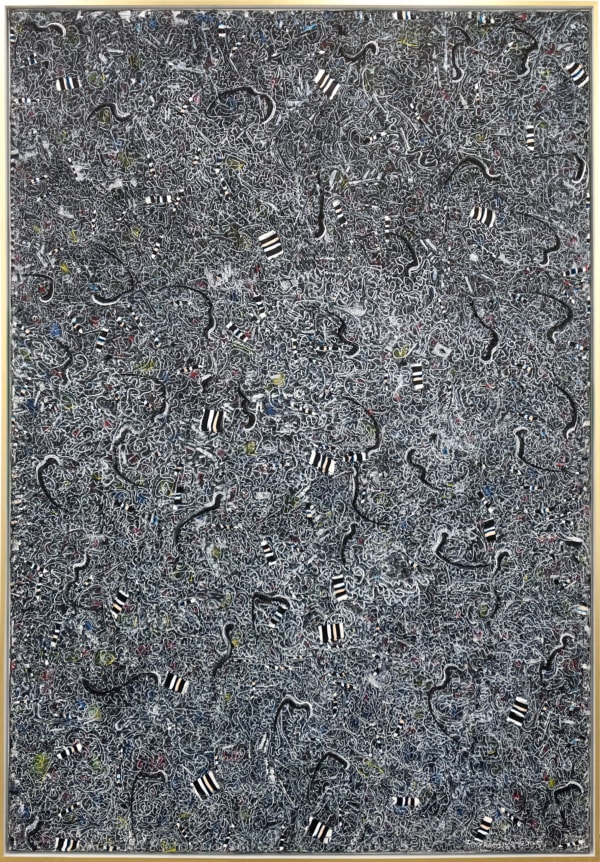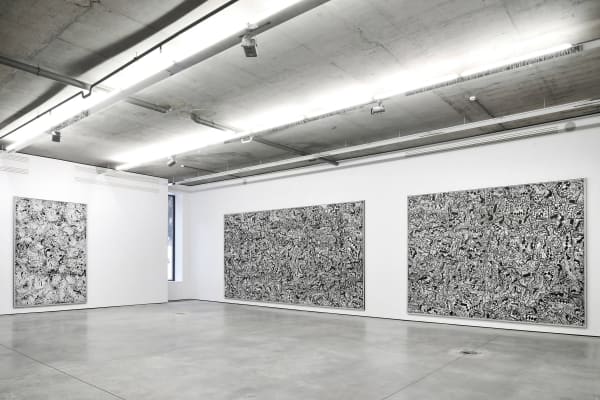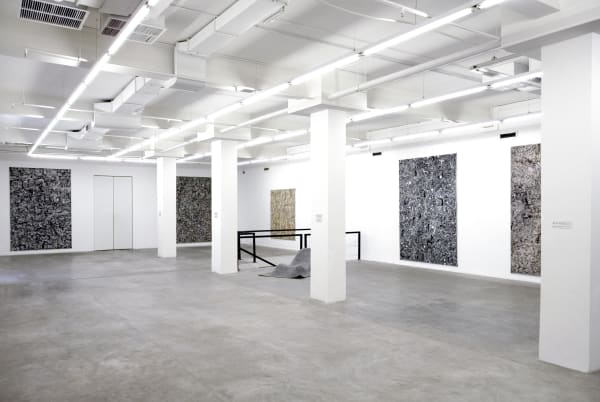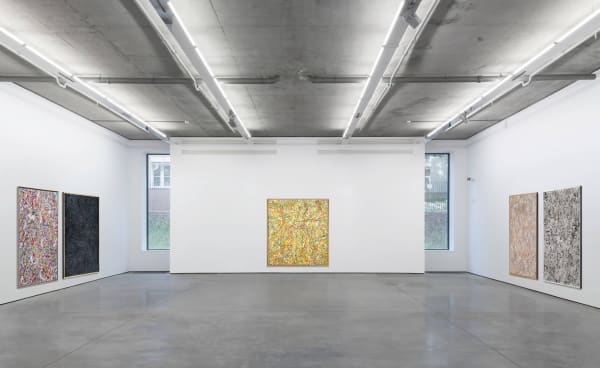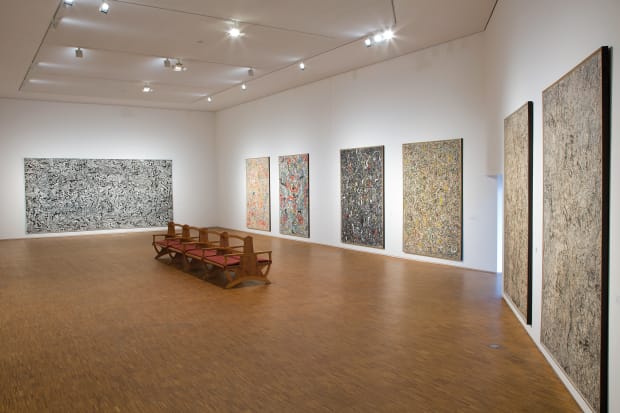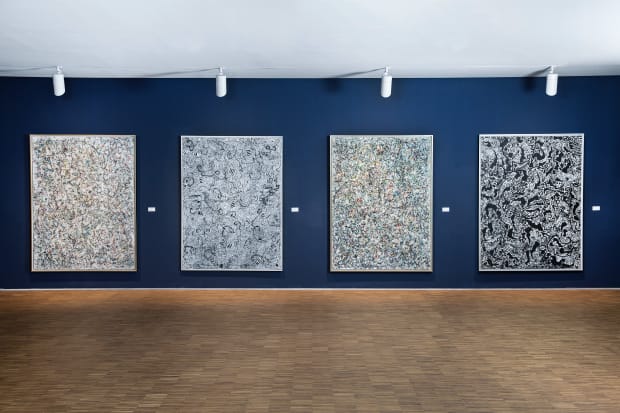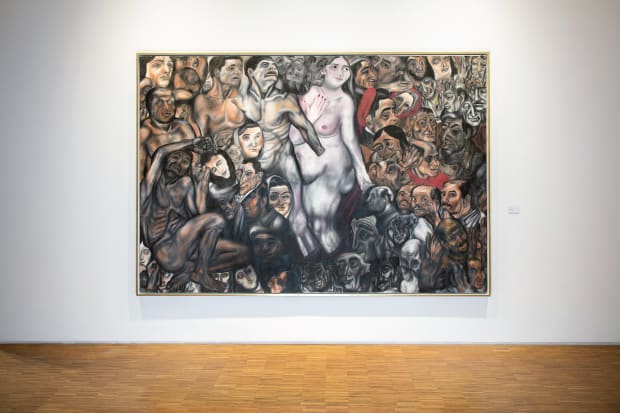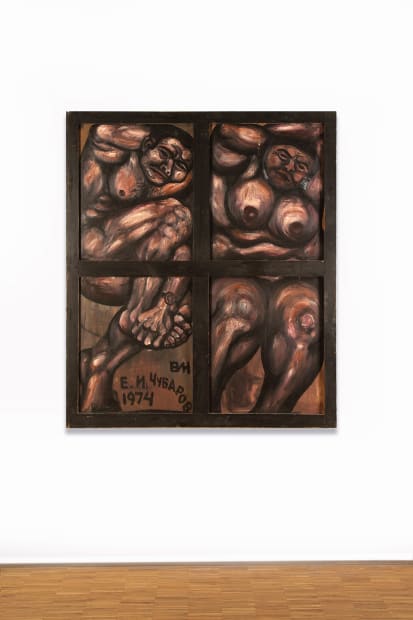Evgeny Chubarov 1934, Bashkortostan, USSR-2012, Moscow region, Russia
-

-
A painter, sculptor, and an enigmatic artist, Chubarov translated his emotions, moods, and intellectual insights to a new ultimate visual language.
DOWNLOAD CV >
Pushing beyond conventional boundaries, Chubarov created his unique iconography that seamlessly merged the elements of contemporary world with the rich tapestry of spiritual art traditions.
For over four decades of his career, Chubarov ventured through the vibrant artistic scenes of Berlin, New York, and Moscow. Throughout this period, he focused on refining and advancing the concept of Pure Abstraction—an innovative intellectual form of abstract gesture painting, where the line and its implementation held a special meaning, endowing it with a distinctive and transformative power.
As an artist of Armenian origin, he drew deep inspiration from the history of Medieval relics, Christian Icons and Middle Eastern Manuscripts, which always surrounded him in his studio. Rooted in the rich ongoing dialogue between the East and West, his abstract works fused the aesthetics of ancient calligraphy and Byzantine art with contemporary painting.
Chubarov subjected the works to a game of improvisation. Driven by the unpredictable nature of abstraction, he experienced this improvisation in a musical sense transforming the canvas into a symphonic phenomenon. Amplifying it with rhythmic bars, visual accents and powerful brushstrokes, he masterfully created a dynamic visual symphony that resonated deeply with its observer. Always completed in sections, with no major “paint attack” on the canvas, Chubarov’s works diverged from classical gestural abstraction, or drip painting, to the realm of new intellectual expressionism.
“There is no traditional center in his paintings. The composition is randomly scattered across the canvas. The works are intentionally created in defiance of academic canons. The arbitrary composition eliminates the internal balance of colors, shapes and strokes and represent “non-relational art.” Nothing is weighed in this limitless freedom. This is where Chubarov performs masterfully.”
— Dr. Tayfun Belgin, Osthaus Museum Hagen. Notes about E. ChubarovEvgeny Chubarov was an artist whose passion for drawing and painting blossomed during his childhood. Influenced by his admiration for applying art and history. He began his artistic journey by studying jewelry design, weapons engraving, and eventually sculpture – the skills that he would later revive on his paintings.
In the early 1990s, Chubarov relocated to Berlin and later to New York City, where his artistic style underwent its final transformation from figurative art to abstraction. Chubarov was awarded a Pollock-Krasner Foundation grant and participated in exhibitions together with the leading artists of the post-war generation: Frank Stella, Peter Halley, Sol LeWitt and Damien Hirst. Artist’s heritage includes over hundreds of paintings, thousands of works on paper and sculptures that can be found in public funds, museums and private collections around the world.
The Chubarov Foundation has been established to collect, preserve and promote the art of Evgeny Chubarov.
The main goals of the Foundation are to collaborate with art institutions on exhibiting, publishing and cataloguing the artist’s works in museums and private collections.
-
Works
-
-
Exhibitions
-

Tatintsian Gallery Selected
Group Exhibition, Dubai 14 Nov - 30 Dec 2022Tatintsian Selected project opens alongside two Dubai landmark events in fall 2022 – Alserkal Art Week and Dubai Design Week.Read more >
Gallery showroom will spotlight selected works by such contemporary masters as Ron Arad, George Condo, Mat Collishaw, Evgeny Chubarov, Peter Halley, John Miller and Jenny Holzer. -

Evgeny Chubarov
Personal Exhibition 3 Apr - 10 Nov 2015Read more > -

Evgeny Chubarov
Personal Exhibition 17 May - 20 Jun 2007Read more > -

Create Your Own Museum
Group Exhibition 24 Jan - 1 Mar 2007Read more >
-
-
Publications
-
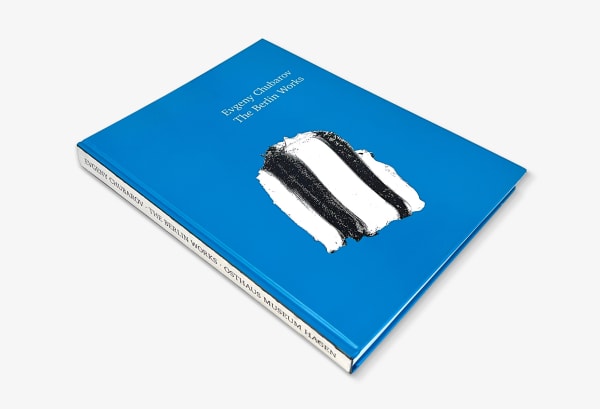
Evgeny Chubarov. Osthaus Museum Hagen
2016Hardcover, 200 pagesRead more >
Publisher: Gary Tatintsian Gallery
ISBN: 978-3-946688-05-1
Dimensions: 210×280 mm -
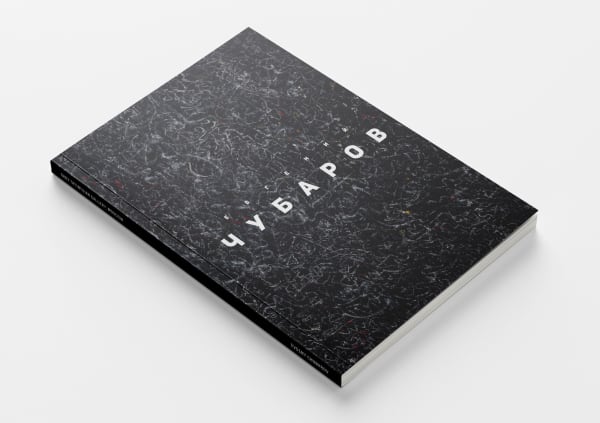
Evgeny Chubarov
2015Paperback, 208 pagesRead more >
Publisher: Gary Tatintsian Gallery
ISBN: 978-5-9906881-2-4
Dimensions: 220x290 mm -
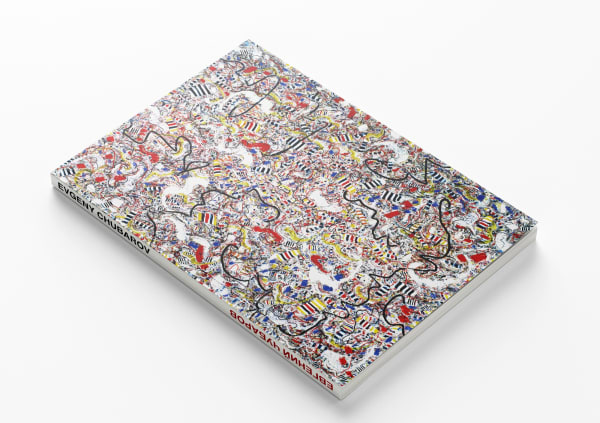
Evgeny Chubarov
2004Hardcover, 164 pagesRead more >
Publisher: Palace Edition
ISBN: 3-935298-79-X
Dimensions: 23,5 x 31,7 cm
-
-
Viewing Rooms
-
-
-
Chubarov’s paintings of that time are characterized by strong, often aggressive, multi-figure compositions, with the exception of scenes of rural life that he only painted from time to time. Very often naked bodies can be found facing each other in multi-figure scenes in such a way that they seem to compete for the space on the canvas. These works are so imbued with the spirit of struggle that sometimes there is a sense of a heated conflict between the sexes. That said, this violent convergence is also marked by an erotic element. This environment is defined not only by nudity, but also by the aggressive and strong-willed poses of the figures. This, in the words of Hans Hofmann, is a good “push” and “pull” relationship: an action of force and its subsequent expression determine the mood of these paintings. All of this is a game of bodies that is similarly reflected in the ink works of the last period.
Two naked figures, full of strength, are embraced in the very limited space of the painting. Chubarov divided the canvas into four parts with a cross: he placed a man to the left and a woman to the right. In an exercise of strength, the naked man is trying to raise his leg, which bears against the boundary of the space. The nude woman with huge breasts and powerful thighs is looking at us, the audience, with her arms crossed behind her head and a surly expression on her face, as if she wants to ask what the purpose of all this torture is. In this symbolic painting, the man and the woman in the crosshairs of the canvas are separated from each other, as if they are in different prison cells.
The 1976 piece “Untitled”, on the other hand, differs in its filigree of the highest form. These works unquestionably pay tribute to the outstanding symbolist and teacher of analytical art, Pavel Filonov, who was one of the pillars of the avant-garde. On Filonov’s canvases, regardless of whether he was depicting peasants, priests or nobles, usually there would be many figures all gathered in a very narrow space, as if the characters materialized out of nature and suddenly gained shape. In contrast to Filonov’s works, Chubarov’s paintings are clearer in their macrostructure. He prefers the golden ratio, which is determined by the naked figure of a woman shifted from the center of the canvas to the right. This mise-en-scène begins on the left with an almost stooping figure, reminiscent of Christ after His Descent from the Cross. Those depicted on the right side of the figure are definitely bigger in size than those depicted on the left of the figure, who look like masks. It is clear that among all the characters, there are two friends meeting, as their facial features are much more expressive than the others’. Both the naked main characters in the center of the canvas are looking up, as if they are waiting for some news. Is the nude woman in the center of the picture the famous heroine Joan of Arc?
In Chubarov’s final years, his works done in ink do not ask such questions. He did not address specific characters, only anonymous figures involved in wild merrymaking. Such merrymaking is characterized not only by erotica, but also by blatant sexual acts. Chubarov accentuates individual body parts, both male and female, that are involved in sexual games. In these provocative paintings, we find primal forms of human life. Civilization is turned off. We are taken back to prehistoric times in a time machine, where we become observers in a world that never ceases to amaze. Do these pictures reflect the aspirations of the artist? In his final years, did he dream, like Picasso, of a turbulent world surrounded by a multitude of men and women? Are these love games, which always have an inherently violent nature, a reflection of our civilization? Do we not want to talk about this? Does it destroy our intimate world? In the final years of Picasso’s work, there were more and more violent scenes. His series dedicated to artists and art models are the best evidence of his resistance to advancing infirmity. Chubarov’s works in ink really get to the point. They demonstrate a rampage, a drama that overcomes the dominance of the world, in a way that may seem surrealistic. Nevertheless, we find a lot of truth in these works, when we try to pass them off as our own fantasies.
These works also tend to transform. In some cases, these wild multi-figure scenes turn into a world of brushstrokes, which seem to absorb their characters. The works in ink are not representational and undoubtedly refer to the major works of the Berlin period, albeit implicitly. They are characterized by pictorial impetus, while the monumental paintings are dictated by the power of lines.
The first encounter with Evgeny Chubarov’s monumental, large-format (3 × 2 m and larger) canvases shows that, figuratively speaking, we are dealing with symphonic works. The expressive power of these works is huge and the effect they have on a space and on the audience is very impressive. Their size suggests that these works are part of a larger context and are more likely intended to be in a museum rather than a private collection.
The word “symphonic” here implies a comparison to smaller-scale chamber works like the multi-figure ink compositions of the final years. These large canvases present an integrity that can be expressed through an understanding of the sublime. The sublime (refined) is traditionally associated with something large and grand. In 1757, in his philosophical studies, Edmund Burke introduced the concept of the sublime to the philosophical aesthetics of modern times that Aristotle had defined in his theory of tragedy. The sublime goes beyond beauty and refers to a feeling of the unattainable. The immense, as if unperceivable to us or attainable only superficially, is one of the defining characteristics of the refined.
Chubarov’s works are associated with this idea of the refined, in the sense of the invisible or indecipherable. The observer truly wonders to what extent he/she is able to grasp the essence of these works. An important formal aspect is dictated by the technique of a composition. There is no traditional center in these paintings, which is to say, that they are created in defiance of academic canons. As a rule, the composition of a work (including abstractionist works) is dictated by academic canons, against which elements of color and form are weighed, or brought into accordance with a specific ratio. In relational art, as it is sometimes called, ratios are always observed, which also involve the center of the picture.
In contrast to this, Chubarov’s canvases of the Berlin period represent “non-relational art”. This means that the composition is randomly scattered across the canvas. This arbitrary composition eliminates the internal balance of colors, shapes, and strokes. Nothing is weighed in this limitless freedom. This is where Chubarov performs masterfully.
We are familiar with the principle of a composition scattered all over the canvas thanks to Jackson Pollock. But, while Pollock’s paintings arose as a fragment of a larger context (his canvases were cut from a larger canvas lying on the floor), Chubarov always painted his works in a set scale, for example 3 × 2 meters. The artist turned to a specific format and worked within this format with all the freedom of the painting process. As far as we know, Chubarov’s work was not done on the floor. He leaned his canvases against the wall or hung them up to paint on them. We also do not see him using splashing or dripping paint techniques, as Pollock preferred.
Chubarov’s paintings are dominated by lines. His works are covered in several layers of lineal ornamentation, while both micro- and macrostructures interpenetrate in the painting process. The work on a piece is carried out in stages, rather than all at once. It is clear that Chubarov had a brilliant inner guiding force in turning his ideas into works of art. Sometimes rounded lines extend from one edge of the painting to the other, that are then replaced by stronger thicker patterns of lines that wrap around the first layer. Then thin rectangular, square or triangular colorful and black blotches are added, arranged in a row, as seen in the images of fragments of paintings included in this catalog. We can also see traces of a squeegee, which was often used to apply a few final layers of paint on top of the previous layers of lineal ornamentation.
The technique of applying paint with a squeegee is observed both in black-and-white and color paintings. Colorful shapes, in red, green, yellow, black, or white paint, are applied to the lower thin layers of black brushstrokes, in such a way that they resemble handkerchiefs waving in the wind, although that is not what is depicted. The color paintings are characterized by a lightness that differs them from most of the black-and-white ones.
Chubarov, as we know, subjected the works of the Berlin period to a game of improvisation. He deliberately chose this style, as he had mastered it. He had no intention of transferring his older works to larger canvases. That seemed too banal to him and offensive to his level of expertise. Chubarov understood improvisation in a musical sense. He was fascinated by unpredictability.
In regard to musical improvisation, musicians Theo Jörgensmann and Rolf-Dieter Weyer wrote, “Improvisation in music means doing unpredictable things, bringing inner feelings to light. It means feeling, mentally analyzing, and acting. Inspiration, intuition, and constructive imagination form an alliance with each other. Thus, improvised music is a firsthand archetypal musical experience. The improvising artist creates his music without detours, directly in its uncut form. He only has himself and his instruments at his disposal, but the artistic quality of his improvisation is always linked to his artistic sensitivity, his personality, his creativity, and his professional musical abilities and skill.”
The words of these two musicians give a broad definition of the concept of musical improvisation, which is fully applicable to Chubarov. This artist found himself in his painting. In his own unique way, he created these marvelous incomparable works. The dialogue between his inner “I” and his canvas, as far as we can tell, was direct and delicate. It was the greatest happiness for him. All of this, of course, would have been impossible if the artistic matter was imperfect.
These paintings of Evengy Chubarov are works that arose as a result of an impulse of genius in the years, after 1989, when he became acquainted with Belin and Western Europe and intensively polemicized with the medium of modern art. His contribution to the world of art was that, in the era of postmodernism, he left us a legacy of works of the greatest originality.
Dr. Tayfun Belgin, Director Osthaus Museum Hagen





